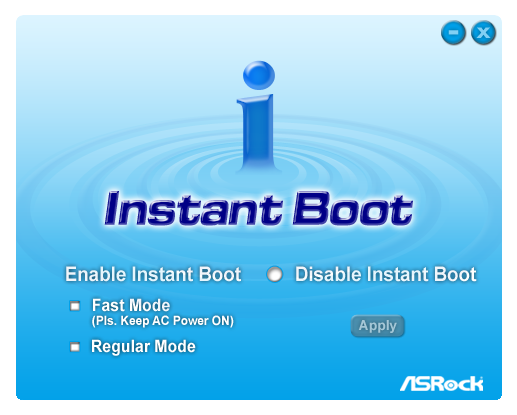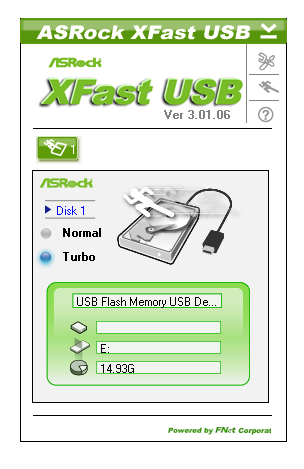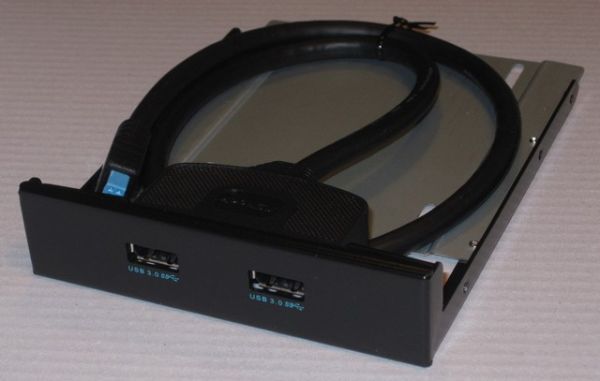Welcome to Sandy Bridge, with the ASRock P67 Extreme4
by Ian Cutress on January 3, 2011 7:00 AM EST- Posted in
- Motherboards
- ASRock
Board Features
| ASRock P67 Extreme4 | |
| Market Segment | Performance |
| CPU Interface | LGA 1155 |
| CPU Support | i3/i5/i7 Sandy Bridge |
| Chipset | P67 |
| Base Clock Frequency |
100MHz, 85-110MHz in 1MHz intervals 100.39MHz default in OS |
| DDR3 Memory Speed | 1066MHz by default. 1333-2133MHz supported. |
| Core Voltage | Auto, 0.600V to 1.520V in 0.005V intervals |
| CPU Clock Multiplier | Dependant on CPU |
| DRAM Voltage | Auto, 1.200V to 1.800V in 0.015V intervals |
| DRAM Command Rate | Auto, 1N, 2N |
| Memory Slots |
Four 240-pin DDR3 DIMM slots in dual-channel Regular unbuffered DD3 memory Up to 32GB total supported |
| Expansion Slots |
3 x PCI Express 2.0 x16 slots (PCIe 1 and 2 operate at x16 in single mode or x8/x8 in dual; PCIe 3 operates in x4 mode) 2 x PCI Express 2.0 x1 slots 2 x PCI slots Supports AMD Crossfire Supports NVIDIA SLI |
| Onboard SATA/RAID |
4 x SATA 6 Gb/s, all NCQ and AHCI 2 of these support RAID (0, 1, 5, 10, Intel Rapid Storage) 2 from the Marvell SE9120 (no RAID) 4 x SATA 3 Gb/s, all NCQ, AHCI, RAID (0, 1, 5, 10, Intel Rapid Storage) |
| Onboard |
4 x SATA 3 Gb/s w/ RAID 4 x SATA 6 Gb/s (2 w/ RAID) 1 x Floppy 1 x IR Connector 1 x COM port header 1 x HDMI_SPDIF header 1 x Firewire header 1 x Front Panel audio connector 1 x Dr. Debug LED 1 x Power switch 1 x Reset switch |
| Onboard LAN | Gigabit Ethernet via the Realtek RTL8111E |
| Onboard Audio |
7.1 Channel HD Audio via Realtek ALC892 Support for THX TruStudio Pro |
| Power Connectors |
24-pin ATX power 8-pin 12V power 4-pin molex connector for Crossfire/SLI |
| Fan Headers |
1 x CPU fan 1 x CPU auxiliary fan 3 x Chassis fans 1 x Power fan |
| Fan Control |
CPU fans controlled jointly, 10 levels Chassis fans controlled independently, 10 levels |
| I/O Panel |
2 x PS/2 Keyboard/Mouse Connectors 1 x Coaxial, 1 x Optical SPDIF Out 6 x USB 2.0 2 x USB 3.0 via Etron EJ168A 1 x eSATA 6.0Gb/s (Shared with onboard connector) 1 x Gigabit Ethernet 1 x Firewire 1 x Clear CMOS HD Audio Panel |
| UEFI Revision | UEFI 1.20B |
In the box
- Quick Installation Guide, Manual, Driver CD
- 2S SLI Bridge
- I/O Shield
- 4 x HDD Screws
- 6 x Chassis Screws
- Floppy Drive cable
- 4 x SATA cables (2 x 90º cables)
- 2 x Molex to SATA power cable
- Front USB 3.0 Panel
- Rear USB 3.0 Bracket
What I like about the extra hardware in the box is this USB panel. It has a space for an SSD, so it frees up a drive bay while giving you front-port USB 3.0 capabilities. This panel, on its own, would probably sell for $15.
Software
Previous ASRock motherboards have been bundled with a heap of software for all sorts of overclocking or power saving modes. Thankfully, ASRock have been smart this time—they have packaged most of their utilities into one program, making it quicker and easier to install and uninstall. With their CD, apart from the driver updates, ASRock include three programs:
ASRock eXtreme Tuning Utility (AXTU)
The AXTU is not the tool we have come to expect from the socket 1156 and socket 1366 motherboard utilities. It shows the vast array of speeds, temperatures and voltages you would expect, and the tool allows you to control the fan speed on the fly. However, a successful CPU multiplier or voltage change requires a reboot. The main criticism about the overclockability tool is that it lacks the ability to manage the memory timings.
The OC DNA is similar to previous ASRock offerings, allowing users to share UEFI settings with each other. The Intelligent Energy Saver has received a trimmed down version—this one no longer states how much energy you are saving over a period of time, just the current voltage, speed, number of phases being used, and whether it is on or off.
ASRock Instant Boot

Another stalwart in the ASRock arsenal is its Instant Boot software. The idea behind it is that when you tell the PC to shutdown, the computer will reboot up to the point where the OS is loaded, then enter a low power mode. When the power button is pressed next, the computer will resume normal action, and you are straight into the OS without waiting to boot up. This worked at stock speeds, but failed to enter a low power mode when we applied the overclock.
ASRock XFast USB

The XFast USB tool is a small application that will attempt to boost USB input/output speed when activated. ASRock claims this little utility will increase USB 3.0 speed by almost double, and USB 2.0 speed by almost quadruple. We will test this with our USB 2.0 and USB 3.0 hardware when we receive it. There's a lack of information online as to exactly how this software works, and the line from ASRock is that the 'XFast USB software modifies part of the USB driver, allowing it to multi-task and enhance the performance - ASRock are continually tuning the performance for better results'. The proof is the pudding, as we'll see.













55 Comments
View All Comments
GTVic - Monday, January 3, 2011 - link
On page 3 there is a BIOS version listed?cmdrdredd - Monday, January 3, 2011 - link
no SATA 6Gbps, only two 8x PCIe lanes not two 16x, and it's generally low end.IanCutress - Wednesday, January 5, 2011 - link
The PCIe bandwidth for P67 is double that of P55/X58, so an 8x here is equivalent to an old 16x. A lot of people gloss over this fact, similar to wondering why the 6xxx cards have less SPs than 5xxx counterparts - it's an architectural change.Ian
drvelocity - Monday, January 3, 2011 - link
Why was the ASUS p8p67 getting spanked so hard in the single GPU tests? Any insight on that?Spivonious - Tuesday, January 4, 2011 - link
Please stop stating that mouse use is something new. I could use the mouse in the BIOS setup of my Tyan 440BX motherboard in 1998.Also, you state that you prefer two ethernet ports but never explain why. Unless you're using the computer as a gateway, why do you need more than one?
IanCutress - Wednesday, January 5, 2011 - link
We never state that using a mouse is something new. We state it's an improvement or a major benefit over the majority of previous BIOS implementations, especially in the last ten years of mainstream computing and to most consumers.In terms of dual Ethernet ports, there are many options:
1) Link Aggregation
2) Large format printers/plotters
3) Various file/server systems require a second NIC for metadata
It's true 99.99% of people won't need it, but for the low price of the chip, it's not too much to ask. Ideally, we'd want the Intel NIC every time - it's more configurable.
Ian
Spivonious - Wednesday, January 5, 2011 - link
"Major benefits include a graphical interface, the ability to use a mouse..."Maybe you didn't mean to, but it definitely implies that these things are new with UEFI.
1) Gigabit switches are under $30. The average broadband connection is well under 100Mbps. There is also very limited support for link aggregation in consumer-level products.
2) Yeah, let me pull that one out of the closet. Again, P67 is targeted at home users.
3) Can you name a few? And again, the average home user might have a simple file/media server.
I would be surprised if the next X series boards don't feature dual ethernet ports, but to mention it more than once on a board targeted towards the midrange is more than a bit silly.
IanCutress - Saturday, January 8, 2011 - link
P67 may be targeted at home users, but industry will look at it as well as a viable option, regardless of where it's targeted. It's easy to get roped into a home-users own little world when that's the only thing that maybe important to you. As a reviewer, it's important not to overlook that fact.The point we make is that it is easy enough for a manufacturer to increase the range of appeal of the hardware, by adding a small hardware element for which there is space. If you read through recent Anandtech motherboard reviews, there is a trend for industry level readers to take note of various products we review and add comments on the benefits/drawbacks certain products have for their line of industry, regardless of where the board is actually aimed for. This is why we cover things like dual Ethernet in reviews.
Ian
mapesdhs - Wednesday, January 5, 2011 - link
I could use a mouse for my SGI's equivalent setup in 1992. :D
Ian.
ibudic1 - Tuesday, January 4, 2011 - link
Thank you for posting your benchmark. We do 3D rendering, and some 3D computation (planned), and your benchmark makes sense for us.If I were to produce a benchmark for you to test would you be interested?